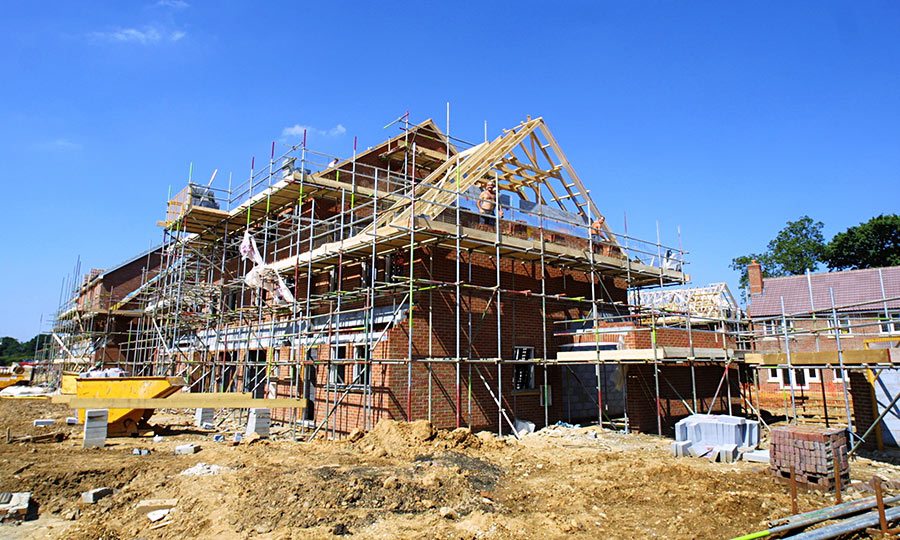Building 300,000 new homes a year in England would start to make housing more affordable, the government claims.
Ahead of this week’s Autumn Budget statement, the Chancellor Philip Hammond made housing a primary issue and set out clear strategies on how they would tackle the shortage of residential properties across the UK.
As a nation, we are facing a major housing crisis as many purchases struggle to save up for large deposits, and this is putting more pressure on the widening affordability gap.
To ensure market fluidity we need to see significant investment in housing stock to enable more people to buy property, which is why Hammond highlighted the need for a greater supply of housing, and pledged in his statement to provide funds to support the construction of up to 300,000 new homes a year.

The Chancellor claims that the government was delivering new homes at record levels, with 217,350 ‘additional dwellings’ in England last year. But while this is impressive, it remains below the target pledged by the government, with the Tories previously committing to delivering 250,000 new homes a year to tackle a ‘decades-old deficit’. It is also significantly lower than the 300,000 new properties that the House of Lords Economic Affairs Committee last year recommended should be delivered each year.
With the government consistently missing its targets, there are a high number of residential properties that are simply not being built each year.
The failure to construct enough homes means that Britain’s housing shortage has now reached crisis point, with the number of prospective buyers and renters dramatically outweighing the volume of homes on the market.
Many people argue that the government has not demonstrated a particularly good understanding as to how to fix our ‘broken’ housing market, which is why it has consistently failed to meet housebuilding targets. The Chancellor’s ambitions for 300,000 new homes a year seem unlikely to be met without clear measures of how this will be achieved, so what has now changed?
+ The Chancellor has committed £44billon for the largest housebuilding drive for decades. The figure will incorporate an extra £2.7billion for the Housing infrastructure Fund.
+ A new skills fund which will train new workers, such as brick layers and electricians, will be set-up.
+ The government wants to speed up the process of building where planning consent has been awarded and help support smaller housebuilders.
+ A new inquiry will be launched to see if large property developers are hoarding land and waiting for the value of it to increase instead of building on it straight away.
+ The government previously announced in October that the housebuilding sector will continue to be supported by the Help to Buy scheme, with a further £10billion pledged to support the initiative.
What more could have been done to support the construction of more new homes?
+ Perhaps more modern methods of construction are needed as a more radical solution for increasing supply.
+ Tax incentives would also provide a major boost. There are various taxes that property experts would like to see addressed, but above all else, the overwhelming majority want the government to cut stamp duty rates for all purchasers (and not just first-time buyers), to help boost housing transactions and property prices.

Expert comments
Russell Gardner, head of real estate at EY, said: “A package of measures over the next five years totalling £44bn, ranging from assistance for local SME house builders to more support for the Build to Rent sector was positioned as giving effect to the Government’s pledge to fix our broken housing market.
“Time will tell if we’ve just seen the start of the end of our housing crisis or the continuation of announcements which fail to be translated into real action but we are optimistic that this feels like a real commitment.”
Rob Desbruslais, director of Hove and London-based Desbruslais Chartered Surveyors, commented: “The government needs to reduce demand and the actual prices. This can only be achieved with taxes and increased supply.
“The Chancellor’s £44billion worth of funding to build 300,000 new homes is a good start. Prices are already falling in London and this may have a natural knock on effect across the rest of the country.”
Paul Isaacs, managing director of Generator Group, said: “Recent figures released by the Government show an increase in housing stock, up 15% on last year, which is a step in the right direction. However, Chancellor, MP Philip Hammond, has got a lot to do to deliver his new target of 300,000 homes per year as announced in his budget speech. I think this is a tall order given we can’t achieve the existing target!
He added: “For some time I have been saying the planning system that is politically motivated, at a local level needs to change, along with the accessibility of funding for smaller housebuilders, so they can both help speed up the delivery.
“The price of land that is offered to small and medium sized developers like Generator Group has been on the increase for some time, as are build costs due to a shortage of skilled labour and materials, so prices are not just affecting the end buyer. We look forward to seeing how the Chancellor will invest £8billion to private housebuilding and PRS development, and an additional £34million to develop construction skills across the country.”